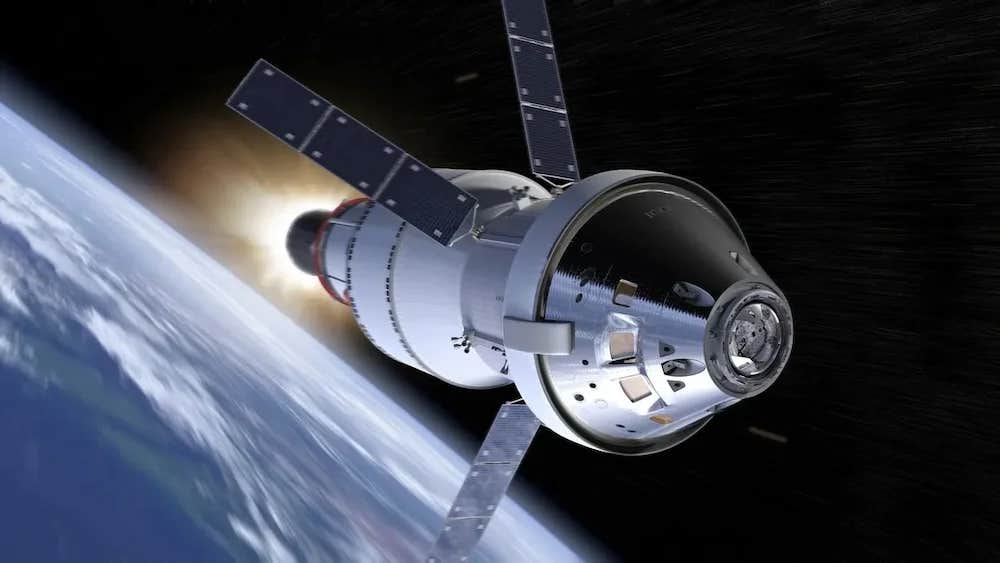NASA’s LEXI imager will provide the first-ever global images of Earth’s magnetosphere
NASA’s LEXI mission will capture the first global images of Earth’s magnetosphere, revealing how it shields us from harmful solar radiation.

NASA’s LEXI mission, launching aboard Firefly’s Blue Ghost Lander, will provide groundbreaking insights into Earth’s magnetic shield and its role in protecting us from solar radiation. (CREDIT: NASA)
A groundbreaking X-ray imager is on its way to revolutionize our understanding of Earth's magnetic defenses. This cutting-edge instrument, the Lunar Environment Heliospheric X-ray Imager (LEXI), is central to NASA’s Artemis campaign. It will provide the first-ever global images of Earth’s magnetosphere—a crucial shield against harmful solar radiation.
Scheduled to launch aboard Firefly Aerospace’s Blue Ghost Lander as part of NASA’s Commercial Lunar Payload Services (CLPS) initiative, LEXI aims to deliver unprecedented insights into Earth’s space weather interactions. This mission, supported by NASA’s Kennedy Space Center, represents a leap forward in understanding how the Sun’s activity influences our planet.
Upon its lunar landing, LEXI will begin a six-day observational period, focusing its gaze back at Earth. Its mission: to capture X-rays generated at the magnetopause—the outer boundary of Earth’s magnetosphere. This natural barrier is constantly bombarded by the solar wind, a high-speed stream of charged particles emitted by the Sun.
By observing from the Moon, LEXI will offer a panoramic view of the magnetopause. This vantage point allows scientists to analyze how the magnetosphere expands, contracts, and reacts to varying solar wind intensities.
“We’re trying to get this big picture of Earth’s space environment,” explained Brian Walsh, a space physicist at Boston University and principal investigator for LEXI. “This will be science that you can see.”
LEXI’s ability to observe low-energy X-rays will enable researchers to visualize dynamic changes in Earth’s magnetic shield. This data could reveal critical details about the magnetosphere’s interactions with solar wind, helping scientists predict space weather impacts more accurately.
Understanding the magnetosphere’s behavior is vital for protecting modern technology. Solar storms can interfere with satellite communications, disrupt GPS systems, and even overload power grids, leading to widespread blackouts. By capturing images of the magnetopause, LEXI could provide the data needed to develop more robust safeguards against these hazards.
LEXI will track how Earth’s magnetosphere “breathes,” expanding and contracting in response to solar wind fluctuations. Hyunju Connor, an astrophysicist at NASA’s Goddard Space Flight Center, expressed excitement about this unique perspective: “We expect to see the magnetosphere breathing out and breathing in, for the first time.”
When solar wind intensifies, the magnetosphere compresses, shielding Earth more tightly. When it weakens, the magnetosphere expands outward.
Related Stories
The instrument will also observe magnetic reconnection, a process where solar wind magnetic field lines merge with those of the magnetosphere. This phenomenon releases high-energy particles, triggering vibrant auroras near Earth’s poles. While visually stunning, these particles can disrupt satellite operations and power grids.
“We want to understand how nature behaves,” Connor noted. “By understanding this, we can help protect our infrastructure in space.”
Researchers hope LEXI will answer long-standing questions about magnetic reconnection. Does it occur steadily or in bursts? Can it happen at multiple locations simultaneously? The instrument’s comprehensive view may provide critical insights into these processes, improving models of space weather.
Auroras are one of the most visible manifestations of these cosmic interactions. The shimmering lights that dance across polar skies are a result of charged solar particles interacting with Earth's atmosphere. While beautiful, these events underscore the dynamic relationship between the Sun and Earth’s protective shield.
LEXI’s journey began a decade ago under the name STORM. Originally developed at NASA’s Goddard Space Flight Center, the instrument was designed to detect low-energy X-rays across a wide field of view. In 2012, STORM flew aboard a sounding rocket, collecting X-ray images before returning to Earth. After its mission, it was retired to a display case.
When NASA solicited proposals for quick, cost-effective CLPS projects, Walsh saw an opportunity to resurrect STORM. “We’d break the glass—not literally—restore it, and refurbish it,” he said. With minimal upgrades, the instrument was transformed into LEXI, ready for a new mission. “There’s a lot of really rich science we can get from this,” Walsh added.
The restoration of LEXI highlights the efficiency and innovation driving NASA’s current approach to space exploration. Instead of developing entirely new instruments, the agency is finding ways to repurpose existing technologies, saving both time and resources. This strategy not only accelerates mission timelines but also ensures that valuable scientific tools are fully utilized.
LEXI’s revival exemplifies the innovative approach of the CLPS program. By leveraging commercial partnerships, NASA fosters industry growth and accelerates lunar exploration. Under this model, private companies like Firefly Aerospace deliver scientific payloads to the Moon, enabling cost-effective research missions.
Beyond scientific discovery, LEXI’s findings could have practical implications for safeguarding modern infrastructure. Solar wind particles, while beautiful in the form of auroras, pose significant risks to satellites, communication systems, and power grids. Understanding the dynamics of Earth’s magnetosphere is essential for developing strategies to mitigate these threats.
Solar storms have, in the past, caused significant disruptions on Earth. The 1989 geomagnetic storm, for instance, led to a nine-hour blackout in Quebec, Canada, affecting millions of people. By improving our understanding of the magnetosphere’s behavior, LEXI could help prevent such events in the future.
As part of a suite of 10 payloads on Firefly’s Blue Ghost lander, LEXI represents a collaborative effort across NASA centers. Goddard oversees the instrument’s science objectives, while NASA’s Marshall Space Flight Center manages seven other payloads on the mission.
The Artemis program’s broader goal—returning humans to the Moon and establishing a sustainable lunar presence—is supported by missions like LEXI. These efforts pave the way for deeper exploration while advancing our understanding of Earth’s place in the cosmos. By peering back at our planet from its closest celestial neighbor, LEXI offers a unique perspective on the invisible forces that protect life on Earth.
This mission is not just about scientific exploration; it’s a testament to human ingenuity and collaboration. The data gathered by LEXI could inform policies and technologies aimed at safeguarding both space-based and terrestrial assets. In doing so, it bridges the gap between theoretical research and practical applications, underscoring the value of investing in space science.
By unlocking the mysteries of the magnetosphere, LEXI takes a bold step toward a safer, more informed future. This mission, though modest in size, carries the potential to reshape our understanding of the relationship between Earth and the Sun—a relationship that has shaped life on our planet for billions of years.
Note: Materials provided above by The Brighter Side of News. Content may be edited for style and length.
Like these kind of feel good stories? Get The Brighter Side of News' newsletter.
Joshua Shavit
Science & Technology Writer | AI and Robotics Reporter
Joshua Shavit is a Los Angeles-based science and technology writer with a passion for exploring the breakthroughs shaping the future. As a contributor to The Brighter Side of News, he focuses on positive and transformative advancements in AI, technology, physics, engineering, robotics and space science. Joshua is currently working towards a Bachelor of Science in Business Administration at the University of California, Berkeley. He combines his academic background with a talent for storytelling, making complex scientific discoveries engaging and accessible. His work highlights the innovators behind the ideas, bringing readers closer to the people driving progress.



